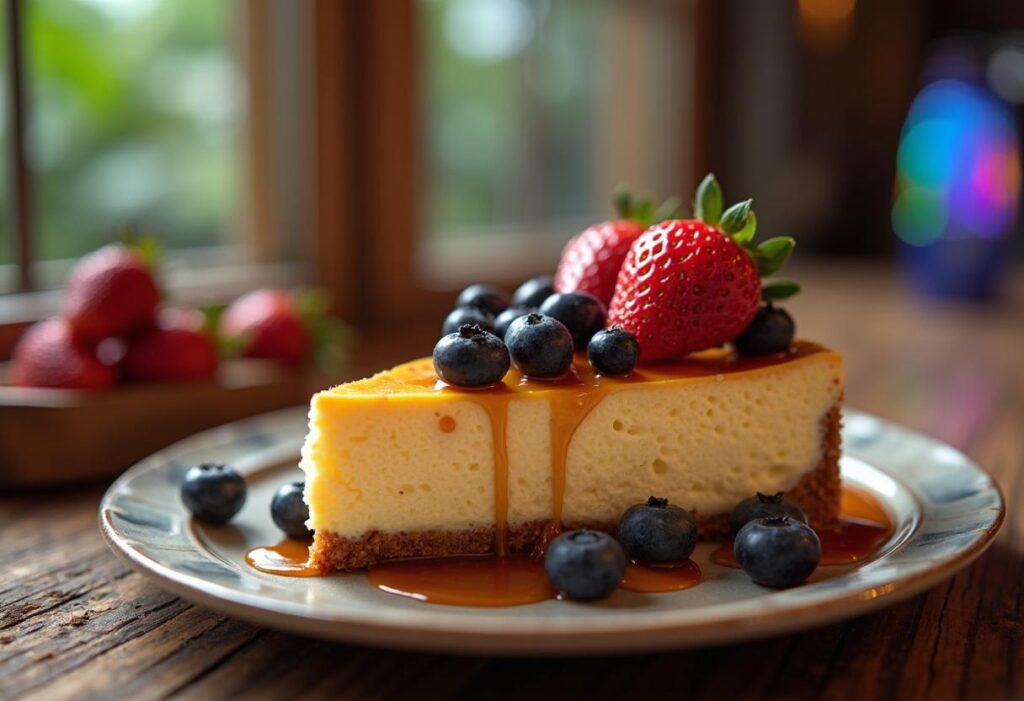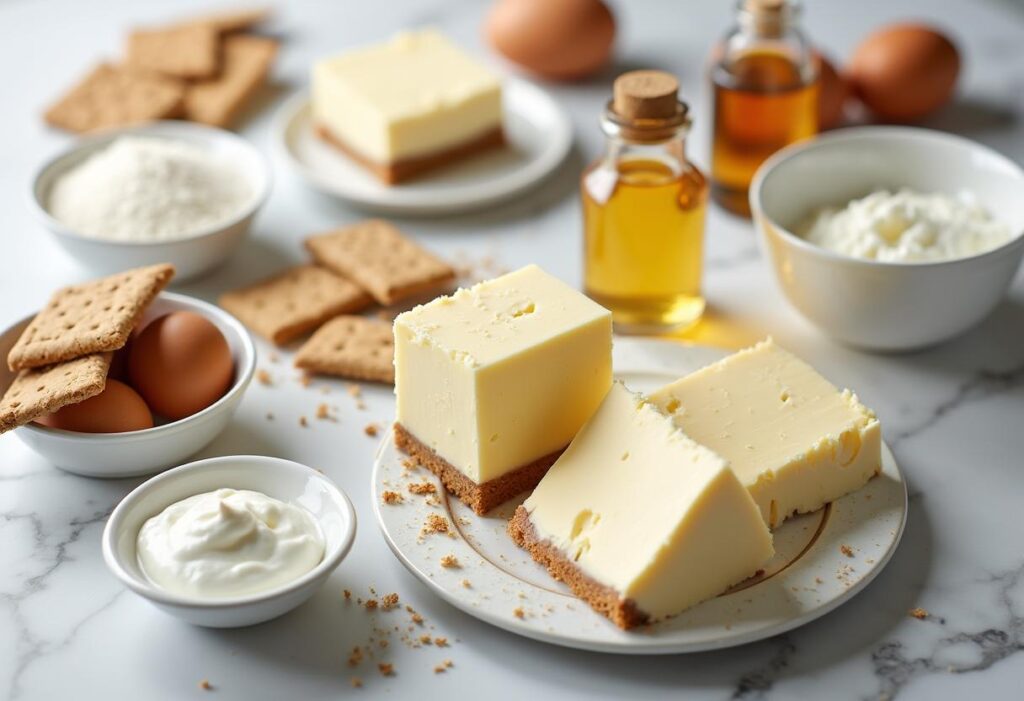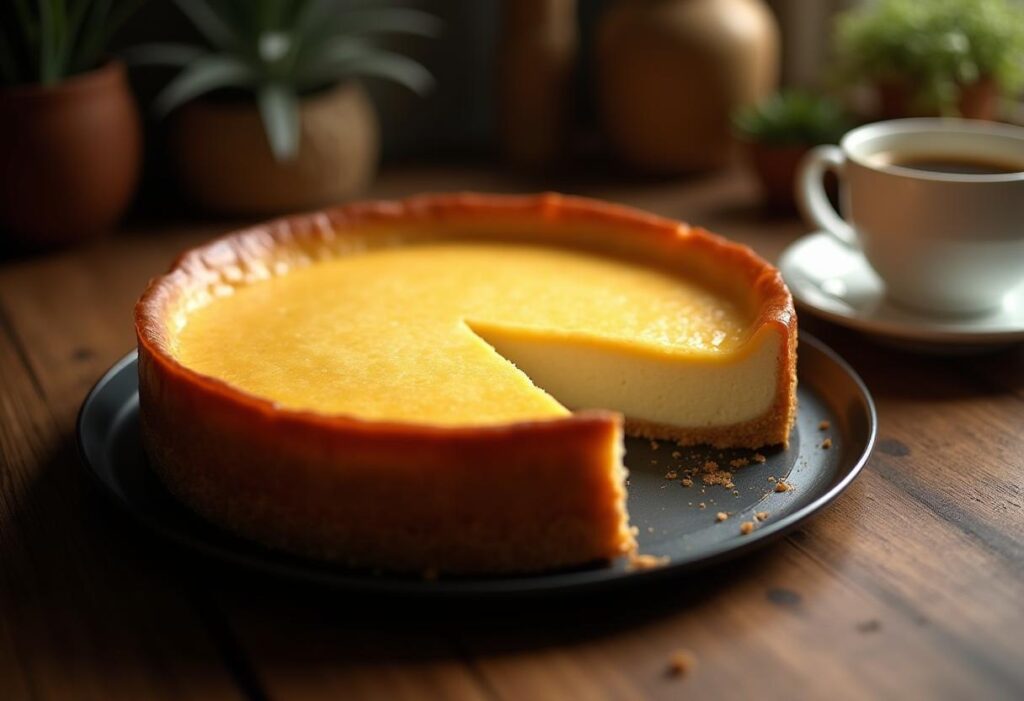
Understanding the Magic of Decadent Cheesecake
What Makes Cheesecake Decadent?
Cheesecake’s decadence lies in its richness and creamy texture that feels luxurious with every bite. Unlike many desserts, it blends the silky smoothness of cream cheese with a buttery crust and indulgent toppings, creating layers of flavor and texture. The best decadent cheesecake is a balance of sweetness and tanginess, with a luscious filling that melts in your mouth. The key to achieving this level of decadence often comes down to high-quality ingredients, careful preparation, and an appreciation for the artistry involved in baking.
From the perfectly baked crust to the velvety filling, a decadent cheesecake is an experience rather than just a dessert. Whether served plain or adorned with toppings like fresh fruit, chocolate, or caramel, cheesecake has a unique way of satisfying even the most discerning sweet tooth.
The Origins of Cheesecake: A Quick History
Cheesecake may seem like a modern dessert, but its origins go back thousands of years. The first recorded cheesecake dates back to Ancient Greece, where it was served to athletes during the Olympic Games. The Romans later adopted the recipe, adding their own twist with honey and cheese. Fast forward to today, and we have countless regional variations, from the dense and creamy New York-style cheesecake to the lighter, fluffier German versions.
What makes cheesecake timeless is its adaptability. Each culture has added its unique touch, making cheesecake a globally cherished dessert. This adaptability is also why it continues to evolve, giving rise to new creations like matcha cheesecake and no-bake versions that cater to diverse tastes.
Types of Cheesecake Around the World
What Are the Three Types of Cheesecake?
Cheesecake comes in many forms, but the three most popular types are baked, no-bake, and Japanese cheesecake.
- Baked Cheesecake: The classic baked cheesecake uses a mixture of cream cheese, eggs, and sugar, creating a dense and creamy texture. It’s usually baked in a water bath to prevent cracking and achieve a silky smooth finish.
- No-Bake Cheesecake: For those who want a simpler and faster version, no-bake cheesecake is the way to go. It doesn’t require baking but relies on ingredients like gelatin or whipped cream to set the filling. This type is lighter and often served chilled.
- Japanese Cheesecake: This version is a delightfully fluffy and airy take on cheesecake, resembling a soufflé. Its texture is light, thanks to whipped egg whites, and it has a subtle sweetness that makes it uniquely satisfying.
New York Style Cheesecake vs. Regular Cheesecake
New York-style cheesecake is the epitome of indulgence, known for its dense, creamy, and ultra-rich texture. It often uses heavy cream, sour cream, and extra egg yolks to create that signature consistency. The crust is usually made from graham crackers, and the filling is baked to perfection with no additional toppings needed—just pure cheesecake bliss.
In contrast, regular cheesecake can vary widely, with a lighter texture and more flexibility in flavors and ingredients. It might include a thinner crust, fruit toppings, or even different bases like sponge cake instead of graham crackers. Both are delicious, but New York cheesecake is considered the gold standard for decadence.
The Difference Between German and New York Cheesecake
While New York cheesecake is dense and rich, German cheesecake, or “Käsekuchen,” is much lighter. It’s made with quark, a soft cheese with a tangy flavor that gives it a delicate texture. German cheesecake often includes a shortcrust pastry base instead of graham crackers and is less sweet, making it a delightful alternative to the heavier New York version.
Ingredients for the Best Decadent Cheesecake
| Ingredient | Why It’s Essential | Tips for Choosing the Best |
|---|---|---|
| Cream Cheese | The base of any cheesecake, providing the rich and creamy texture. | Use full-fat cream cheese at room temperature for a smooth filling. |
| Sugar | Sweetens the cheesecake and balances the tanginess of the cream cheese. | Opt for superfine granulated sugar for better incorporation. |
| Eggs | Helps bind the ingredients together and adds richness to the filling. | Use fresh, large eggs, and add them one at a time for better blending. |
| Sour Cream or Heavy Cream | Adds creaminess and a slight tang to enhance the flavor profile. | For a denser cheesecake, choose sour cream; for a lighter texture, go with heavy cream. |
| Vanilla Extract | Enhances the flavor and gives the cheesecake a subtle aromatic touch. | Use pure vanilla extract instead of imitation for a richer taste. |
| Graham Crackers | The base for a classic cheesecake crust. | Choose high-quality crackers or experiment with alternatives like Oreos or digestive biscuits for variation. |
| Butter | Holds the crust together and adds a rich flavor. | Unsalted butter works best to control the overall saltiness of the dessert. |
| Optional Toppings | Adds a decorative and flavorful finish (e.g., fruits, chocolate, caramel, or whipped cream). | Select fresh fruits or high-quality toppings to complement the richness of the cheesecake. |

Sour Cream vs. Heavy Cream: What’s Better for Cheesecake?
- Sour Cream: Creates a denser, slightly tangy filling that pairs well with the richness of cream cheese. It’s ideal for classic and New York-style cheesecakes.
- Heavy Cream: Produces a lighter, airier texture, making it perfect for no-bake or flavored cheesecakes.
Pro Tip: Some recipes combine both sour cream and heavy cream to balance richness and creaminess, giving you the best of both worlds.
The Secrets to Making Good Cheesecake
The Importance of Baking Techniques
Creating the perfect decadent cheesecake isn’t just about the ingredients; it’s also about technique. Here are some key baking secrets to master:
- Room Temperature Ingredients: Always bring your cream cheese, eggs, and other dairy to room temperature. This ensures a smooth batter and prevents lumps in your cheesecake.
- Mixing with Care: Overmixing introduces air into the batter, which can cause the cheesecake to rise and crack during baking. Blend until just combined.
- Water Bath Method: Bake your cheesecake in a water bath (bain-marie) to maintain even cooking and prevent the edges from overbaking. Wrap the springform pan tightly in foil to avoid water seeping into the crust.
How to Avoid Cracks in Your Cheesecake
Cheesecake cracks are every baker’s nightmare, but they’re easy to prevent with the right tips:
- Avoid Overbaking: The cheesecake should jiggle slightly in the center when you shake the pan gently. Overbaking leads to dryness and cracking.
- Gradual Cooling: Sudden temperature changes can cause cracks. Turn off the oven, leave the door ajar, and let the cheesecake cool slowly for an hour before transferring it to the counter.
- Prevent Overmixing: Too much air in the batter causes the cheesecake to puff up in the oven and crack as it cools.
Pro Tip: If cracks do form, cover them with a luscious topping like chocolate ganache, fruit compote, or whipped cream—it’s a delicious fix!
Step-by-Step Recipe for Decadent Cheesecake
Preparation: Tools and Ingredients
Tools You’ll Need:
- Springform pan (9-inch)
- Mixing bowls
- Electric mixer (or stand mixer)
- Spatula
- Baking tray for water bath
- Aluminum foil
Ingredients for the Crust:
- 1 ½ cups graham cracker crumbs
- 5 tbsp unsalted butter, melted
- 2 tbsp sugar
Ingredients for the Filling:
- 4 (8 oz) packages of full-fat cream cheese, softened
- 1 cup granulated sugar
- 1 cup sour cream (or heavy cream for a lighter texture)
- 4 large eggs, at room temperature
- 1 tsp pure vanilla extract
The Baking Process: Step-by-Step Instructions
- Prepare the Crust
- Preheat your oven to 325°F (163°C).
- Mix graham cracker crumbs, melted butter, and sugar in a bowl.
- Press the mixture into the bottom of the springform pan to form an even layer.
- Bake for 8-10 minutes, then set aside to cool.
- Make the Filling
- In a mixing bowl, beat the softened cream cheese and sugar until smooth and creamy (about 2-3 minutes).
- Add the sour cream and vanilla extract, mixing until combined.
- Add the eggs one at a time, mixing just until incorporated. Do not overmix.
- Assemble and Bake
- Pour the filling over the cooled crust. Smooth the top with a spatula.
- Wrap the bottom of the springform pan with foil and place it in a larger baking tray. Add hot water to the tray until it reaches halfway up the sides of the pan.
- Bake for 55-70 minutes. The cheesecake should be slightly jiggly in the center but set at the edges.
- Cool and Chill
- Turn off the oven and let the cheesecake cool inside with the door slightly ajar for 1 hour.
- Remove from the oven, cover, and refrigerate for at least 6 hours or overnight for the best texture.
Cooling and Serving Tips for Cheesecake
- Slice using a warm knife (run it under hot water, then dry) for clean, smooth cuts.
- Serve plain or with toppings like fresh berries, caramel drizzle, or chocolate shavings.
Creative Cheesecake Variations to Try
Matcha Cheesecake: A Trendy Twist
For a unique flavor with a touch of elegance, Matcha Cheesecake is a must-try. The earthy and slightly bitter notes of matcha (green tea powder) balance perfectly with the rich, creamy texture of cheesecake.
How to Make It:
- Add 2-3 tablespoons of high-quality matcha powder to your filling mixture during the blending process.
- For an extra aesthetic appeal, sprinkle matcha powder on top or create a marble effect by swirling matcha into the batter before baking.
Why You’ll Love It:
Matcha cheesecake is not only delicious but also Instagram-worthy, thanks to its vibrant green color.
Chocolate Ganache Cheesecake: For Chocoholics
This decadent version is perfect for chocolate lovers. The rich ganache topping adds an indulgent layer to the creamy filling, making it a dessert to remember.
How to Make It:
- Melt 1 cup of dark chocolate with ½ cup of heavy cream to create a silky ganache.
- Pour it over the cooled cheesecake and let it set in the fridge for a glossy finish.
Why You’ll Love It:
The combination of creamy cheesecake and smooth chocolate ganache is a match made in dessert heaven.
Fruit-Topped Cheesecakes: A Fresh Touch
Classic yet refreshing, fruit-topped cheesecakes are always a hit. From strawberries to blueberries, the possibilities are endless.
How to Make It:
- Create a fruit compote by simmering your favorite fruits with sugar and a splash of lemon juice.
- Pour the compote over the cheesecake just before serving for a fresh burst of flavor.
Why You’ll Love It:
The fruity topping adds brightness and balances the richness of the cheesecake, making it ideal for summer gatherings.
Common Cheesecake Mistakes and How to Fix Them
Why Does Cheesecake Crack?
Cracks in a cheesecake are one of the most common baking challenges, but they can easily be avoided. Here are the main causes and how to fix them:
Common Causes of Cracks:
- Overbaking: Cheesecake is done when the edges are set, but the center should still jiggle slightly.
- Sudden Temperature Changes: Rapid cooling can cause the cheesecake to contract and crack.
- Overmixing the Batter: Too much air in the batter causes it to rise and fall, leading to cracks.
How to Avoid Cracks:
- Use a water bath to bake your cheesecake evenly.
- Allow the cheesecake to cool gradually in the oven before transferring it to room temperature.
- Mix the batter until just combined to minimize air bubbles.
How to Save an Overbaked Cheesecake
If your cheesecake ends up overbaked and dry, don’t worry—it’s not a lost cause!
Fixes for Overbaked Cheesecake:
- Add a Topping: Cover the surface with a generous layer of chocolate ganache, fruit compote, or whipped cream to add moisture and disguise any cracks.
- Chill It Longer: Overbaked cheesecakes can improve in texture after chilling for an extended period (at least 12 hours).
Pro Tip: Always bake at a low temperature (around 325°F) and monitor carefully in the last 10 minutes.
Expert Tips for the Perfect Cheesecake

How to Achieve the Perfect Texture
The hallmark of a perfect decadent cheesecake is its creamy, melt-in-your-mouth texture. Here’s how to nail it every time:
- Use Full-Fat Ingredients: Full-fat cream cheese, sour cream, and heavy cream provide the richness that cheesecake is known for. Low-fat substitutes can lead to a watery texture.
- Don’t Overmix the Batter: Overmixing incorporates too much air, making the cheesecake rise during baking and collapse as it cools. Mix until the ingredients are just combined.
- Bake Slowly: A low temperature (around 325°F) allows the filling to set gently, ensuring a velvety consistency.
Baking at the Right Temperature
Temperature control is crucial when baking cheesecake. Follow these tips to prevent overbaking or underbaking:
- Use an Oven Thermometer: Ovens can run hotter or cooler than their settings. A thermometer ensures accuracy.
- Check for Doneness: The cheesecake is ready when the edges are set, but the center jiggles slightly when gently shaken.
- Cool Gradually: Turn off the oven and leave the door slightly open for an hour to let the cheesecake cool slowly and prevent cracks.
Pro Tip: Always bake your cheesecake in the middle rack of the oven to avoid uneven cooking.
FAQ: Answering Cheesecake Questions
What Are the Three Types of Cheesecake?
The three main types of cheesecake are baked, no-bake, and Japanese cheesecake.
- Baked Cheesecake: Dense and creamy, baked slowly to perfection.
- No-Bake Cheesecake: Light and airy, set in the refrigerator.
- Japanese Cheesecake: Fluffy and souffle-like, with a subtle sweetness.
What Is the Best Cheesecake in the World?
While taste is subjective, New York-style cheesecake is often considered the best due to its rich, dense texture and creamy flavor. Many also love Japanese cheesecake for its lightness or German Käsekuchen for its tangy, delicate taste. The best cheesecake is ultimately the one that suits your flavor preference!
What Is the Secret to Making Good Cheesecake?
The secret lies in using high-quality ingredients, proper mixing to avoid overworking the batter, and baking at a low temperature with a water bath. Additionally, allowing the cheesecake to cool gradually and chill overnight enhances its texture and flavor.
What Is the Difference Between New York-Style Cheesecake and Regular Cheesecake?
New York-Style Cheesecake: Rich, dense, and made with heavy cream or sour cream for extra creaminess.
Regular Cheesecake: Lighter, with more variations in flavors, toppings, and crusts.
Is Sour Cream or Heavy Cream Better for Cheesecake?
Sour Cream: Adds tanginess and creates a denser texture, ideal for classic or New York-style cheesecakes.
Heavy Cream: Makes the filling lighter and silkier, perfect for no-bake cheesecakes or flavored variations.
What Is the Difference Between German Cheesecake and New York Cheesecake?
German cheesecake, or Käsekuchen, uses quark (a tangy fresh cheese) and has a lighter, less sweet flavor. New York cheesecake is denser and richer, made with cream cheese and baked to a creamy perfection.
Conclusion and Inspiration for Cheesecake Lovers
Cheesecake is more than just a dessert; it’s a culinary experience that combines rich flavors, creamy textures, and endless possibilities. Whether you prefer the dense luxury of a New York-style cheesecake, the airy lightness of a Japanese cheesecake, or a creative twist like matcha or chocolate ganache cheesecake, there’s a version for everyone to enjoy.
The key to making a truly decadent cheesecake lies in the details—using full-fat ingredients, mastering the art of the water bath, and allowing ample time for cooling and chilling. These steps may require patience, but the reward is a flawless cheesecake that melts in your mouth and impresses everyone at the table.
If you’re new to cheesecake baking, start with the classic recipe and then explore fun variations to suit your taste. Remember, even mistakes like cracks or overbaking can be turned into opportunities for creativity with toppings and garnishes.
Final Thought: Cheesecake is timeless, adaptable, and always a crowd-pleaser. So why not roll up your sleeves and give it a try? You might just discover your new favorite dessert!
Discover great ideas like our Matcha Tiramisu Recipe for foolproof dessert inspiration.
